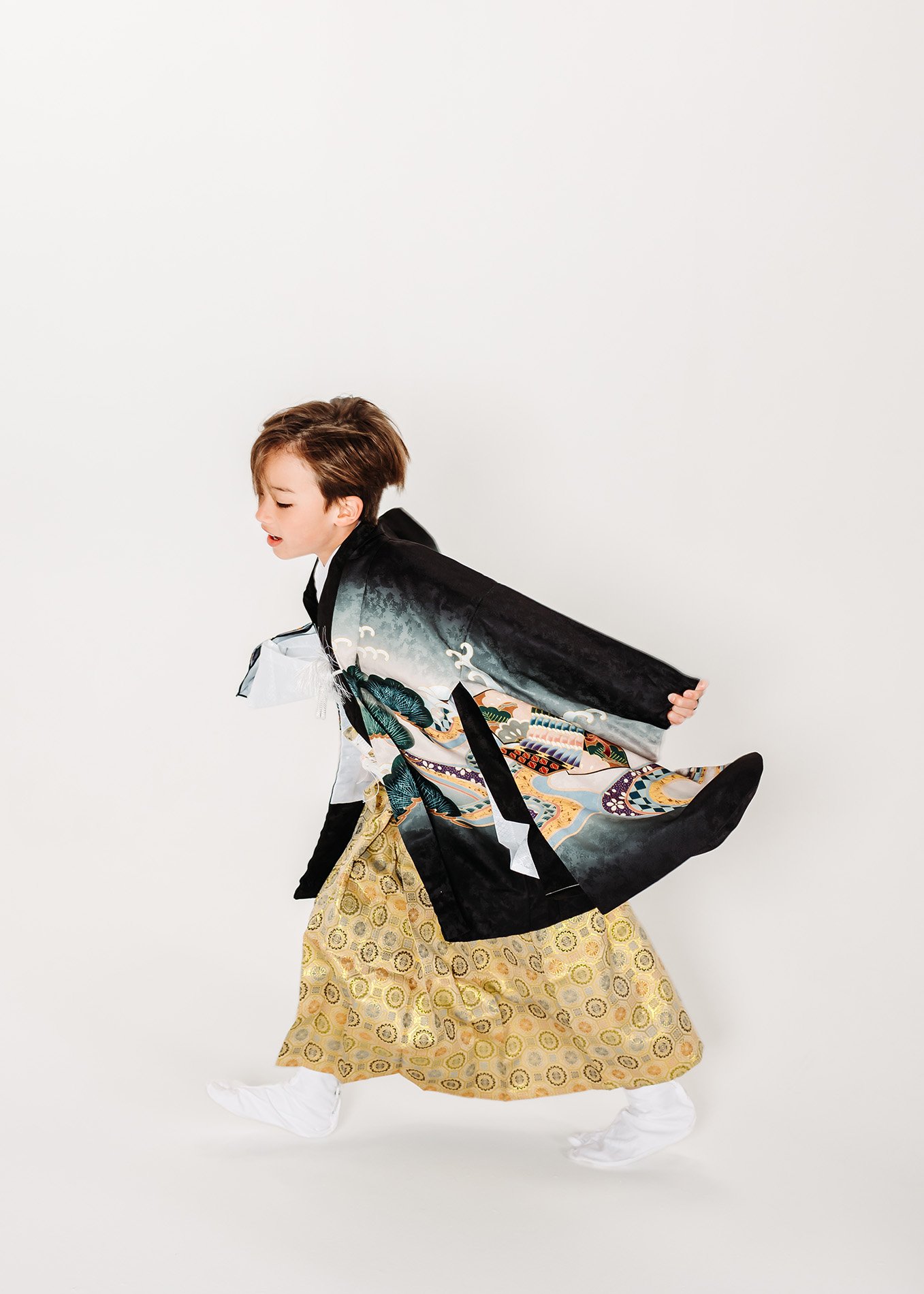
The Art of In-Between
Portraits of bicultural kids and their identities
A Celebration of
Children with
Japanese-American Roots
Once a garment worn daily by all Japanese people, the kimono has evolved into a ceremonial symbol—reserved for culturally significant milestones such as Shichi-Go-San (the 7-5-3 celebration), Seijinshiki (Coming of Age Day), graduations, and weddings. In contemporary society, wearing the kimono represents more than tradition; it is a conscious act of cultural pride and preservation.
As a Japanese immigrant and photographer based in the U.S., I see these garments not only as expressions of heritage but as visual narratives of identity, growth, cultural continuity, and the quiet power of the in-between—of navigating life between cultures.
This photo series reimagines that tradition through a bicultural lens. Rather than presenting the kimono as a fixed or formal artifact, I center the individuality of Japanese-American children, celebrating who they are—right now—in this moment of becoming. Each child is encouraged to be themselves: to move, play, and express their quirks and uniqueness freely—even while wearing attire often associated with formality and restraint.
By allowing their personalities to shine through, these portraits help nurture a sense of self-worth and belonging within the quiet complexity of living between cultures. They serve as a reminder that heritage can be a space of joy, pride, and self-celebration.
The Art of In-Between is, ultimately, a celebration of bicultural presence. It honors the past without romanticizing it and invites a broader reflection on what it means to grow up in-between—where tradition meets individuality, and where children are not asked to choose between cultures, but are instead empowered to embody both. It is not about preserving culture in a static form, but about evolving it with authenticity, intention, and playfulness.



























